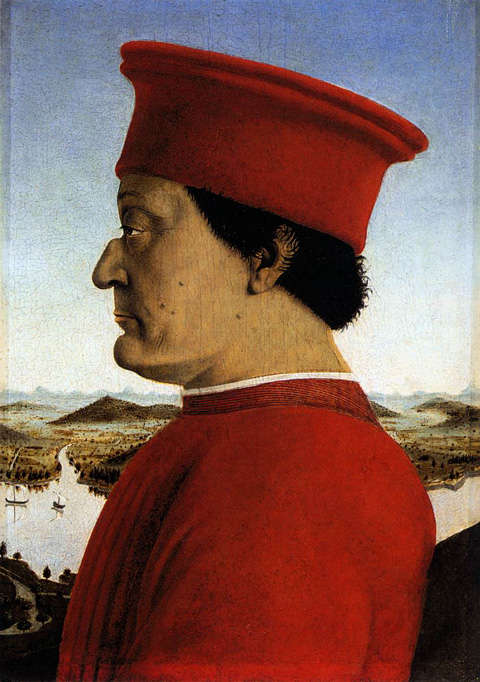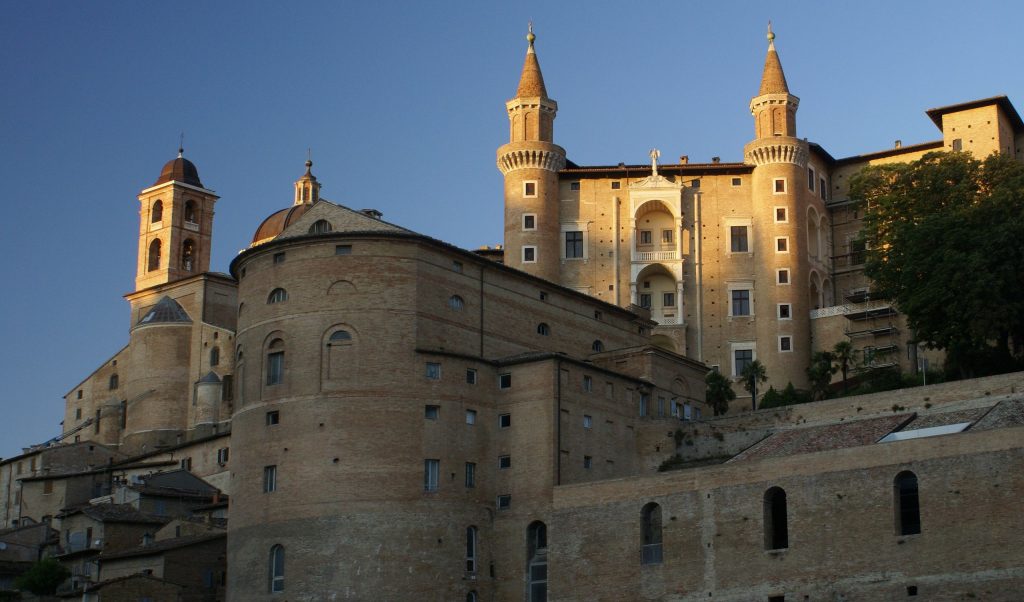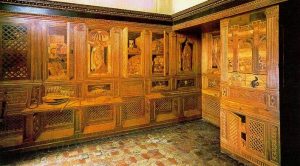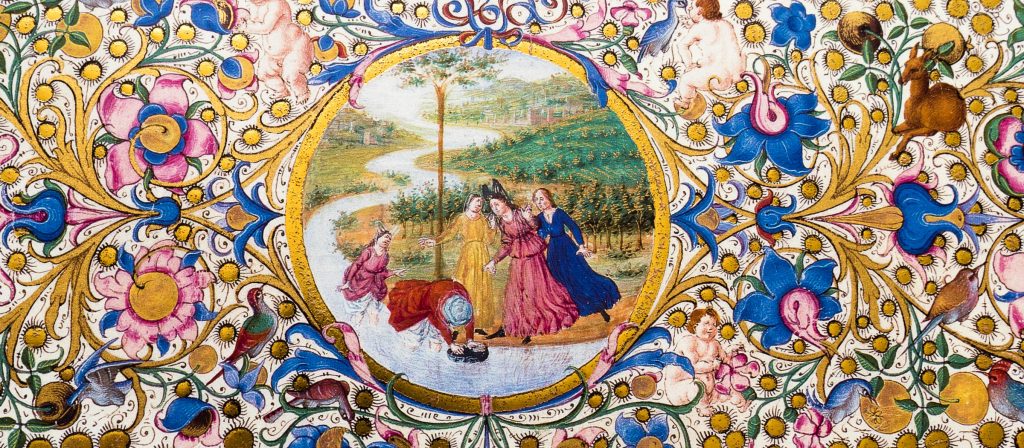In occasion of Federico da Montefeltro’s death anniversary, we though to celebrate this great patron of Renaissance with a short trip to his palace and his library in Urbino.

As many of you may know, the town of Urbino (a few km away from San Marino) was home to Federico da Montefeltro (7 June 1422 – 10 September 1482), a condottiero, a duke, and a patron of Renaissance.
To the latter role, we owe the creation of one of the most interesting and fascinating manuscript collections, which has survived almost entirely until modern times.
So we thought you might enjoy knowing a little more about him and his outstanding library, which reflects his artistic tastes as much as his personal and political history.


Currently, the collection is no longer located in Urbino, as it was moved to the Biblioteca Apostolica Vaticana where each volume is dearly taken care of, however, the actual library and its essence remain in the Palazzo Ducale of Urbino, which oozes with the Duke’s personality at every turn, just think of his studiolo, entering the room leaves most of the people breathless.
Scholars have long studied the figure of Federico and his library and it has been estimated that, before 1464, his library contained “only” about 100 volumes (still more than the average number of books that many of us read in a lifetime), however, the Duke of Urbino was an exceptional bibliophile and he was not going to stop at that. So, the situation quickly changed in the following years and, by the time of his death, his library contained more than 900 volumes, roughly divided like so:
- 600 volumes in Latin or Vernacular
- 168 in Greek
- 82 in Hebrew
- 2 in Arabic
This we know not only from the physical listing of each manuscript but also thanks to the Indice Vecchio, an inventory drafted by the librarian Guidubaldo da Montefeltro around 1487.

Albeit a man of great charisma, Federico did not succeed in this endeavor all on his own – an Italian saying goes: Anche la regina ha bisogno della vicina, which in English would be: Even the queen herself might need a hand by her neighbors – in this case the neighbor being Vespasiano da Bisticci, a humanist writer who helped the Duke create and develop this magnificent library. As to the value of the volumes contained in the library, he writes:
In quella libraria i libri tutti sono belli in superlativo grado, tutti iscritti a penna, e non ve n’è ignuno a stampa, chè se ne sarebbe vergognato, tutti miniati elegantissimamente, et non v’è ignuno che non sia scritto in cavretto
which for the very few of you who do not speak Italian roughly translates: “the library contained books that were all superlative, all handwritten, and there is not a printed volume, for he would have been ashamed, they are lavishly illuminated, and there is not one that isn’t written on kidskin”. Vespasian knew what he was talking about as he is considered to be one of the most important booksellers of the Quattrocento.
The library contained several works of art, among which one certainly stands out both in terms of size and value, the Bible of Federico da Montefeltro. This manuscript, part of the Florentine group of the library (circa 300 volumes), was created around 1477 by Francesco di Antonio del Chierico, an artist active in Florence and who was generously ‘loaned’ to the Duke of Urbino by Lorenzo de’ Medici.



